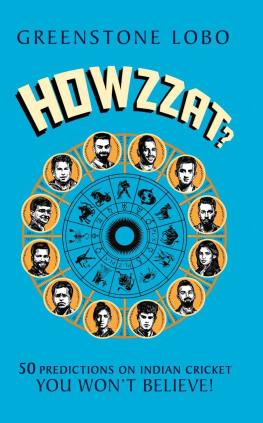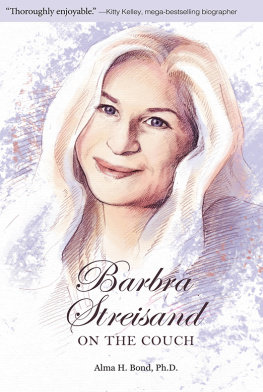
About
the Author

BORN IN VIENNA AND EDUCATED IN DARJEELING AND Kolkata, Ashis Ray is an award-winning journalist who is today the senior-most active Indian broadcaster and writer on cricket, having made his debut as a test match commentator on All India Radio at the age of 24.
He was the only Asian ball-by-ball commentator on the BBCs coverage of the epic 1983 World Cup. He has also commentated on the sport on ABC of Australia, SKY SPORTS UK, SONY and Doordarshan; and written on cricket for every major British and Indian newspaper.
His home entertainment video, Great Moments of Indian Cricket 1932-86, released by HMV and Virgin in 1987, became an international bestseller. His 2008 TV documentary, 1983: Indias World Cup, screened in various countries, narrowly missed being short-listed for a BATFA nomination. His book, One-Day Cricket: The Indian Challenge, published by HarperCollins in 2007, became a bestseller in India.
He has lectured on cricket at Oxford University.
London-based, Ray is the longest serving Indian foreign correspondent, having worked uninterruptedly in this capacity since 1977 for BBC, CNN, the Ananda Bazar Group and The Times of India. He is presently editor-director of a soon-tobe-launched news agency.
CRICKET WORLD CUP
CRICKET WORLD CUP
THE INDIAN CHALLENGE

ASHIS RAY

First published in 2015
Copyright Ashis Ray 2015
All rights reserved.
No part of this publication may be reproduced
or transmitted in any form or by any means, electronic or mechanical,
including photocopying, recording, or any information storage or retrieval
system, without prior permission in writing from the publishers.
No responsibility for loss caused to any individual or organization acting
on or refraining from action as a result of the material in this publication
can be accepted by Bloomsbury India or the authors/editor.
Bloomsbury Publishing India Pvt Ltd
Vishrut Building, DDA Complex
Building No. 3, Pocket C-6 & 7, Vasant Kunj
New Delhi 110 070
Bloomsbury is a trademark of Bloomsbury Publishing Plc
ISBN: 978-93-84898-24-3
10 9 8 7 6 5 4 3 2 1
The content of this book is the sole expression and opinion of its author, and not of the publisher. The publisher in no manner is liable for any opinion or views expressed by the author. While best efforts have been made in preparing this book, the publisher makes no representations or warranties of any kind and assumes no liabilities of any kind with respect to the accuracy or completeness of the content and specifically disclaims any implied warranties of merchantability or fitness of use for a particular purpose.
The publisher believes that the content of this book does not violate any existing copyright/intellectual property of others in any manner whatsoever. However, in case any source has not been duly attributed, the publisher may be notified in writing for necessary action.
To the countless who have over the years tolerated with such
kindness my commentaries and writings

Contents

Preface
This is a chronicle of the World Cup from an Indian perspective; not a glorification of Indian cricket. It is an attempt at a dispassionate appraisal of the rise, fall and re-rise of Indian cricket in the one-day realma saga one cannot ignore, for with it has increasing since 1983 been inextricably linked the financial fortunes of world cricket.
It is a volume not just for Indians, but for anyone interested in cricket and India.
The book covers all 10 previous tournaments and previews the upcoming one. Each of Indias matches starting with the 1975 World Cup is recorded, as well as every single semi-final and final.
It would have been absurd to even contemplate this manual after the first two World Cups, so ridiculous were Indias performances in these. But 1983 transformed everything.
That summer in England, India, led by Kapil Dev Nikhanj, not just convulsed world cricket by exhilaratingly capturing the crownthat, too, against the then seemingly unassailable West Indiesbut Indians thereafter got so inebriated by limited overs cricket, that a comparatively Cinderella sport, restricted to a handful of Commonwealth countries was catapulted into a big money extravaganza. India-based corporates and television networks bank-rolled the shorter versions of the game; and the last World Cup in 2011 culminated in India, much to the delight of their delirious supporters, lifting the trophy a second time.
Therefore, as the curtain rises in the 11th edition, the second in Australasia, the excitement of hundreds of millions of Indians out of Indias population of 1.25 billion and among 25-30 million overseas Indians has, arguably, never been greater; just as much as the pregnant anticipation of cricket lovers in the rest of the world is possibly at a peak.
The Cricket World Cup is a phenomenon within the compass of my lifetime. I have, in fact, had the pleasure of watching every single championship live, other than the inaugural one, of which I saw extended highlights on television. This book is, therefore, written considerably from a first-hand inter-face and memory, embellished and refreshed by reference work.
My presence at so many World Cups would not have been possible without assignments from various media. So, l should record my debt to BBC, United News of India, Ananda Bazar Group, ABC of Australia, The Times of the UK, The Statesman of Kolkata, The Tribune of Chandigarh, DNA of Mumbai, Indo-Asian News Service and SONY Entertainment Television for despatching me and using my services.
The coverage of the first eight World Cups1975 to 2003has been adapted from my previous book One-Day Cricket: The Indian Challenge published in 2007. Quotes from players who were involved in the competitions now enhance the evaluation. This is especially true of the chapter on the 1983 World Cup. The reactions are sourced from a television documentary on the event1983: Indias World CupI co-produced with Century TV in 2008 to mark the 25th anniversary of Indias achievement.
Sachin Tendulkars release of his autobiography Playing It My Way in the last quarter of 2014 was timely. This placed his impressions of Indias successful campaign in the 2011 World Cup in the public domain. A few of these as well as a couple of other comments have been incorporated as quotes.
The opening chapter deals with the first two World Cups1975 and 1979both agonising and embarrassing from an Indian standpoint.
The next is devoted entirely to the remarkable turnaround in 1983, beginning with a success against the indomitable West Indies in their backyardBerbice in the interior of Guyanaand ending with the slaying of the same side on a heady evening at Lords to snatch the silver away from the Caribbean.
Next page














